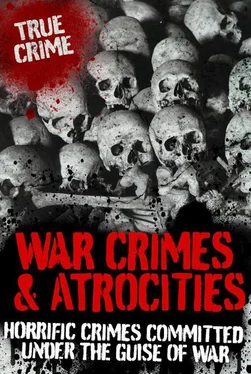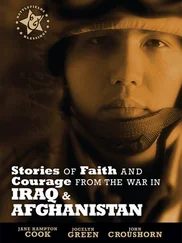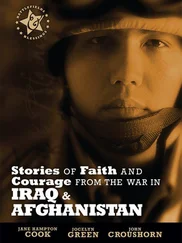The commander of the Dutch forces requested for backup after shells and rockets fell close to the refugee centres, but help was slow in coming.
On 9 July, the Serbs stepped up their bombing and mass panic took hold of the civilian population. Thousands of refugees fled into the village centre ahead of the advancing Serbs, who attacked the Dutch observation posts, taking approximately 30 hostages. By the evening around 4,000 refugees were in the village and large crowds had gathered around the Dutch positions. The Dutch tried to pacify the crowd by telling them that NATO planes would launch massive attacks on the Serbs if they had not withdrawn from the safe area by 6.00 a.m. the following morning.
However, the Serb forces did not retreat, and the Dutch request for backup had been denied, as they said it had been ‘submitted on the wrong form’! The promised NATO planes, which had been airborne since 6.00 a.m., had to return to refuel, and the citizens of Srebrenica feared the worst. By midday, more than 20,000 refugees had gathered at the UN base at Potocari.
At 2.30 p.m. two Dutch fighters dropped bombs on the Serb troops surrounding Srebrenica. They responded by saying they would kill their Dutch hostages and continue with the shelling of the refugees. Taking their threat seriously, the Dutch decided not to attack further.
By mid-afternoon the Serb commander, Ratko Mladic, entered the village, accompanied by Serb cameramen. In the evening Mladic demanded a meeting with the Dutch Colonel Karremans, at which he delivered an ultimatum that the Muslims must hand over their weapons to guarantee their safety.
The next day, 12 July, buses arrived to transport the women and children to safety. Meanwhile, the Serbs started to round up all the men aged between 12 and 77 for what they called ‘interrogation for suspected war crimes’. In the next 24 hours, it is estimated that as many as 23,000 women and children were deported, while the men were held hostages in trucks and warehouses. Around 15,000 Muslim fighters managed to escape Srebrenica and fled to the hills in their effort to get to Muslim protected territory, but they were shelled in their attempt and the majority were killed.
The first massacre of unarmed Muslims took place in a warehouse in the neighbouring village of Kravica. In return for the release of the 14 Dutch officers, peacekeepers handed over about 5,000 Muslims who had been sheltering at the Potocari base. Following talks between the UN and the Serbs, the Dutch were eventually allowed to leave the enclave as long as they left their weapons, food and medical supplies behind.
In the five days that the Serb forces occupied Srebrenica, it is believed that more than 7,000 Muslim men were brutally massacred. Many of them were killed in the school gymnasium in Bratunac, the site of an earlier genocide of Muslim men. Many more were slaughtered at a football pitch near Nova Kasaba, which turned out to be the worst killing ground in the period of the massacre. It is alleged that some of the refugees were forced to dig their own graves, after which they were simply lined up in front of them and shot one by one. In a radio broadcast, which was intercepted by westerners, the Bosnian Serb commander, General Radivoj Krstic, told his forces, ‘You must kill everyone. We don’t need anyone alive’.
Muslims who had fled to the hills had become trapped by the Serb bombardment and, through lack of food, water and sleep, many of them succumbed to hallucinations and paranoia, which resulted in them turning on one another. Some even resorted to shooting themselves, believing that the Serbs would take pity on the wounded. Others simply committed suicide in an attempt to escape the nightmare they found themselves in. Thousands, with the promise of safe passage, surrendered to the Serbs, only to be taken to nearby fields and warehouses, where they were brutally executed and buried in mass graves.
FINAL DEATH COUNT
The estimated number of men killed range from 7,000 to as high as 10,000, but that doesn’t account for the 18,406 Muslims, Serbs and Croats who are still listed as missing. It has certainly gone down in history as one of the worst cases of concentrated genocide in Europe during the past 50 years. As to who is responsible – the executions were reportedly carried out under the orders of General Ratko Mladic and Radislav Krstic, who ironically was promoted to general within a few days of the killings.
In 1996, the International Criminal Tribunal indicted both Mladic and Krstic for ‘crimes against humanity’. In July 1999, the Tribunal found that the atrocities at Srebrenica had been operating under a ‘direct chain of military command’ from Belgrade and the Serbian President, Slobodan Milosevic. Before he could be brought to justice, Milosevich died on 11 March, 2006, while on trial at The Hague.
The United Nations should also feel compelled to share responsibility for allowing the massacre to happen right under their noses. They released a self-critical statement in November 1999, which stated:
Through error, misjudgement and the inability to recognize the scope of evil confronting us, we failed to do our part to save the people of Srebrenica from the Serb campaign of mass murder.
The memory of the Srebrenica men has been kept alive by their women, who have organized themselves into a group called ‘The Women of Srebrenica’. They continue to press for further forensic investigations, which so far has turned up some 3,000 bodies.
1994

Rwanda is a tiny country in Central Africa and is probably best remembered as being the subject of one of the most intensive killing campaigns ever to take place. In a period of 13 weeks after 6 April, 1994, as many as half a million people perished in a mass slaughter, almost three-quarters of the minority Tutsi population. At the same time, thousands of majority Hutus were also slain because they opposed the killing campaign and the forces that were in control of it.
RWANDAN HISTORY
Rwanda’s population is divided into two ethnic groups: the Hutus and the Tutsis. The Hutus make up the larger number and they are by tradition crop growers and farmers. Over the centuries, Hutus have attracted Tutsis from northern Africa to come and work in Rwanda and, for over 600 years, the two groups shared the same language, culture and nationality. Rwanda was first colonized by the Germans, but during World War I the country was taken over by the Belgians, who upset the balance of the community and caused a rift between the two groups. Using the strategy of ‘divide and rule’, the Belgians granted preferential status to the minority Tutsis because they were predominantly the landowners, while the Hutus mainly worked on the land. This thoughtless introduction of a class structure unsettled the stability of the Rwandan population. Proud of their new status, some of the Tutsis started to behave like aristocrats, which made the Hutus feel like the underdogs, and a political divide was formed.
To add to the already vulnerable situation, the Europeans introduced modern weapons and modern methods of war. Missionaries also came from Europe, bringing with them a new twist – they taught the Hutus to see themselves as the underdogs – which helped to inspire a revolution. With the backing of the Europeans, the Hutus chose to fight back, resulting in the loss of over 100,000 lives in the 1956 rebellion. Three years later the Hutus had seized power and were stripping the Tutsis of their land and control of Rwanda. Over 200,000 Tutsis retreated to neighbouring countries, where they formed their own army, the Rwandan Patriotric Front (RPF). The Tutsis trained their men and bided their time, waiting for the right opportunity to get their own back on the Hutus.
Читать дальше













